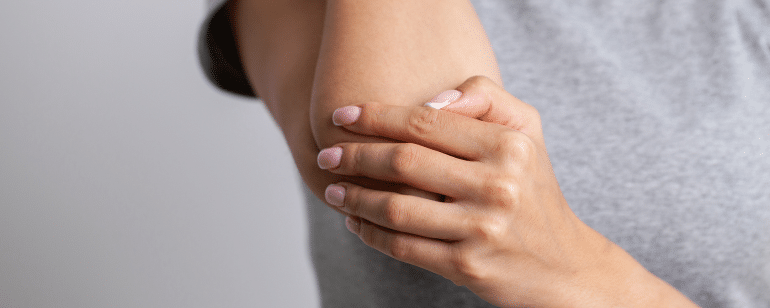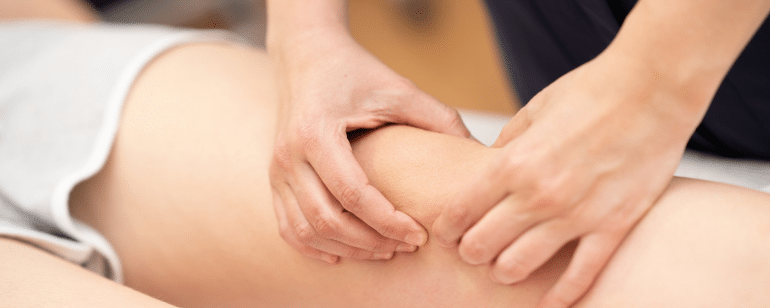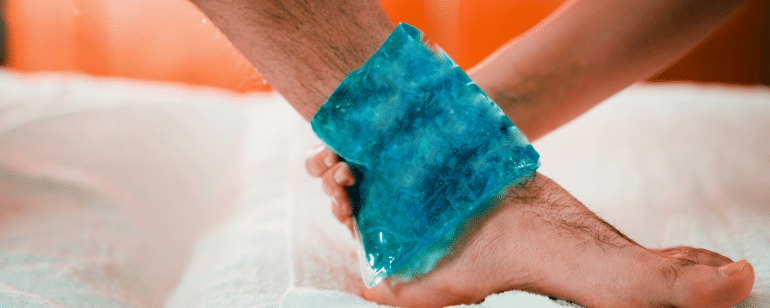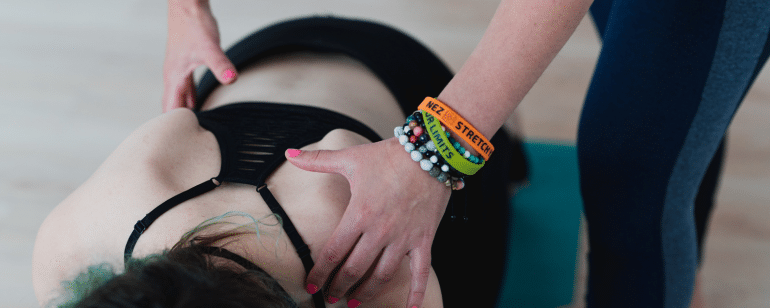Pain, swelling or redness near a joint can indicate bursitis. Bursitis usually manifests itself in the shoulder, elbow, hip or knee. If a bursa near a joint is inflamed, symptoms typically occur that can often be identified as bursitis.
The typical symptoms of bursitis (inflammation of the bursa)

The typical signs of bursitis can occur alone or in combination with other conditions.
Most sufferers complain of pain in the joints or near the joints, which can be dull or stabbing. Bursitis can be identified by swelling and reddening of the skin over the inflamed bursa. If you press gently on an inflamed bursa, you will feel a pain that you would feel after a violent impact. The swelling and pain can then lead to restricted movement, which has a negative effect on the mobility and flexibility of the affected joint.
If you suffer from such symptoms, you should consult a doctor or physiotherapist to obtain a clear diagnosis based on a physical examination. The treatment can then be customized depending on the cause and degree of inflammation.
Treatment of bursitis (inflammation of the bursa)
Depending on the cause of the disease, therapeutic measures may include both rest and physical exercises to relieve the affected joints while at the same time strengthening them.

Gentle on the joints
If the cause of the bursitis is that you have put excessive strain on the affected joint, the corresponding activities should be reduced or stopped completely. Sometimes it is not necessary to immobilize the joint, but to adapt the activities. Sometimes incorrect postures or positions can lead to overstimulation of the joints, so activity modification can help to relieve the joints by changing certain movement patterns.
Physiotherapy for bursitis
A visit to a physiotherapist is definitely recommended if you suspect that you are suffering from bursitis. In order to keep joints permanently mobile, it is necessary to stabilize the muscles and improve mobility.
The aim of physiotherapy is to strengthen the muscles and make the joints more flexible. Targeted exercises reduce the load on the bursa so that the joint can be more stable. While additional stretching exercises are used to promote the flexibility of the joint, relaxation exercises ensure subsequent relief and permeability.
Posture training may be necessary to keep the joints stable in the long term. An analysis of posture and movement patterns can identify the causes of bursitis, so that a change in learned patterns may be necessary. The task of physiotherapy can therefore also consist of teaching techniques to optimize movement sequences in order to reduce the strain on the bursa as far as possible.

Pain therapy for bursitis
There are various methods to reduce pain and swelling. Resting posture and physiotherapy can provide relief and eliminate pain. In some cases, injections or anti-inflammatory medication can help to relieve pain. These should always be recommended by a doctor.
Swelling can be reduced with cold therapy if necessary and depending on the individual case. A cooling pad can be used to soothe the affected areas if the doctor or physiotherapist advises such a measure. It may also be advisable to wear a compression bandage if this is suitable for the individual case.
An inflammation of the bursa (bursitis) can usually be treated well, provided the cause can be identified and an individually tailored therapy is used. It is important to react promptly to the first symptoms in order to provide the best possible treatment.
